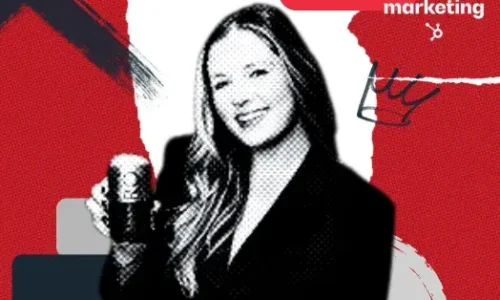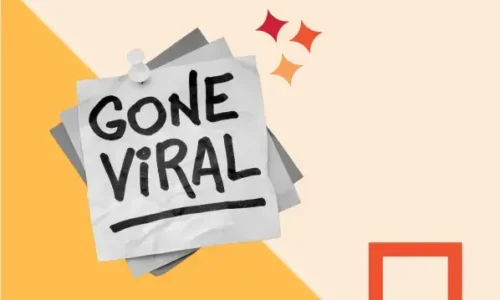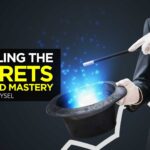How Luxury Brands Market and What You Can Learn
- February 16, 2024
- Knowledge Base
- 0 Comments
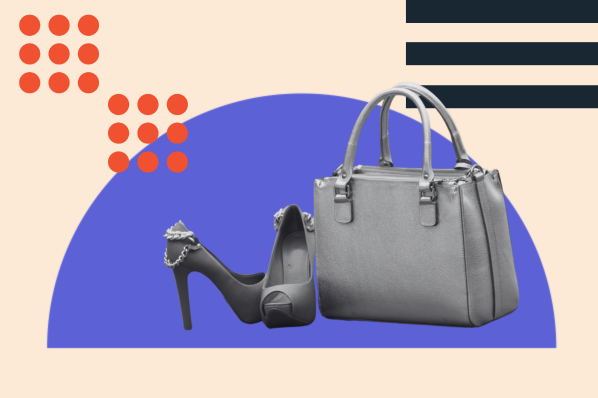
I don’t easily fall for ads or grab products because of marketing tricks. Okay, okay…unless it’s a suitable luxury brand marketing strategy like a catchy video.
In that case, I transform from someone who ignores ads to someone who needs that head-turning perfume as soon as possible.
Do I really need it? Not at all.
Do I still put it in my shopping cart?
Guilty — I admit.
That’s how good marketing works—even the strongest fall. So, in this piece, I’ll explore the top strategies from the best luxury brands worldwide and share the secrets you simply want to know.
Luxury Brand Marketing Strategy
How That Applies to Other Businesses
Luxury Brand Marketing Strategy
Top luxury brands understand that customers seek more than a product. It’s a journey, exclusive and special: quality, craftsmanship, and artistic flair.
It’s about making you feel sophisticated, high-class, and part of something big.
I’ve researched seven popular brands and selected some of their best strategies to help you understand how luxury brands market.
Let’s get started.
Louis Vuitton — Strategic Collaborations
Besides its fancy stores with shiny fronts, Louis Vuitton is super active on social media.
They love teaming up with celebs and thus make their stuff even more desired because, well, if celebs wear it, you know it’s cool.
For instance, check this collaboration with Belgian rapper Hamza Saucegod and Pharell:
LV’s collections are also often inspired by celebrities. One standout example is Virgil Abloh’s Men’s Fall Winter Collection — a tribute to Michael Jackson.
Here’s how the stunning fusion of fashion and music iconography looked:
Louis Vuitton includes celebrities in their ads, too. In one of his YouTube videos, Viktor Stoilov dissects an LV ad featuring four famous actresses.
Louis Vuitton strategically chooses celebrities to align with its brand values, create a global appeal, tell a compelling story, and connect with a diverse audience.
“Louis Vuitton is not for everyone. Louis Vuitton is special, and you need to understand it through the concept of four lifestyles, four buyer personas, four people that are representing this in a perfect way,” says Viktor Stoilov, Founder of Markademics.
According to Stoilov, Louis Vuitton reminds buyers that they make luxurious products you can use off the runway. Their fits or bags are part of a luxurious, cosmopolitan lifestyle.
“It’s not a studio. It’s not flashy. It’s not something super complex. No, it’s the streets of Paris, the galleries of Paris, driving your retro car around Paris, being this badass woman, or just walking around and thinking about life and time,” says Stoilov.
What I like: Besides innovative and strategic collaborations, Louis Vuitton’s secret weapon is its iconic monogram from 1858. You’ll find this same pattern on their products even 160 years later.
And no, it’s not just a random design choice — it’s a wise move in their brand strategy. This consistent use across bags, wallets, and clothes has created a timeless identity and made LV products instantly recognizable.
Dior — From Tradition to Future
Getting into the virtual world is crucial to connect with younger audiences, and Dior gets it.
By teaming up with Meta Media Holdings and using Baidu’s XiRang app, they made their Fall 2022 menswear collection a hit in the virtual “Meta Ziwu.”
The Metaverse simulates a super-real world, using techs like Blockchain, AI, Digital Twins, AR, VR, and machine learning.
This marketing strategy caters to the preferences of luxury consumers who want a mix of exclusivity and accessibility.
And here’s what Lisa Nan, fashion expert and journalist at Jing Daily, says: “Now more than ever, being associated with one of the hottest buzzwords is a matter of staying relevant to today’s young and distracted consumers.”
The Metaverse brings countless opportunities — new business avenues and growth while breaking down old boundaries in the fashion industry.
What I like: Dior’s digital makeover won me over! It caught everyone off guard since Dior is usually seen as more traditional. Luxury and digital don’t always match, but Dior proved everyone wrong.
P.S. I’m also obsessed with Christian Dior Couture’s LinkedIn videos — they’re seriously leg-shaking good! Check out my fav here.
Porsche — More Than Showroom
Porsche breaks free from traditional advertising molds by immersing customers in experiential marketing. The Porsche Experience Centers, where customers test their driving skills, redefine the car-buying journey.
It’s not just a purchase; it’s an adventure.
Also, Porsche’s museums are more than static displays — they’re living testaments.
The Porsche Museum in Stuttgart bridges the historic and the modern. It showcases a brand narrative evolving through time.
And then, we have events like the Rennsport Reunion that serve as community builders. Porsche dismantles barriers, welcoming every attendee into the Porsche family.
No velvet ropes — just a shared passion for the brand.
At The Gathering event in 2019, Scott Baker, Porsche’s Marketing Communications Director, explained this point perfectly.
Baker reports that the brand had 120 people working in various departments at the Porsche event.
“And these are people from human resources, from legal; they work in finance. And here they’re mingling with our drivers, our owners; they’re chaperoning people up to the top of the corkscrew so they could be at the racetrack from another vantage point,” says Baker.
At the event, Porsche reinforces that anyone can connect with the brand.
“They might work on financial spreadsheets all day long, but they get to experience this, and it really gives them an appreciation for the bigger thing that they’re really working towards every day,” Baker says.
What I like: While others focus on glossy ads, Porsche crafts lasting connections by immersing customers in its brand story.
Lamborghini — Selling the Experience
Why don’t we see Lamborghini in a TV commercial?
Because the brand has an exclusive niche market, the company knows it’s not cost-effective to show such cars to a broad audience when only a few can afford them.
So, what is Lamborghini’s luxury brand marketing strategy?
The Lambo team focuses on the continual improvement of their products and creating exclusive offers to attract customers:
“It’s necessary to continue this path of growth with products that are more and more attractive to the market but that at the same time also have higher margins,” says Paolo Poma, chief financial officer and managing director of Automobili Lamborghini.
One of these exclusive offers is Lamborghini Winter Academy. This is where all car enthusiasts can learn how to drive a Lamborghini in the snowy Alps.
Since 2012, Lamborghini’s Esperienza Accademia Neve in Livigno has been a go-to for on-ice driving courses.
This three-day program, guided by expert instructors, teaches participants how to handle Lamborghini cars in low-grip situations. The package includes a stay at the luxurious hotel, too.
What I like: Any educational and experiential thing, such as academies, courses, and webinars, is a good marketing strategy.
Why? Because it evokes people’s passion for something.
Lamborghini does this by giving people incredible experiences at their academy, turning them into potential car buyers.
Rolex — Old School, But It Works
Unlike Lamborghini, Rolex does things a bit differently. They don’t shy away from TV commercials. Instead, they use them smartly and team up with famous people.
Rolex makes TV commercials you might see during significant sports events or on channels like CNN and ESPN. In these ads, you’ll spot celebrities wearing Rolex watches.
For instance, the partnership between Rolex and tennis began in 1978 at The Championships, Wimbledon.
Rolex is now part of major tennis events, including Grand Slam® tournaments and international competitions.
It supports big stars like Carlos Alcaraz and Iga Swiatek and nurtures young talent, contributing to the sport’s growth.
I love how James D. Roumeliotis, author and strategic advisor, explains Rolex’s marketing:
“Rolex promotes itself as a predominantly high-end luxury brand that is the ultimate aspiration of the consumer…a fashionable alternative to using a cell phone to tell time and a status symbol,” he says.
He explains, “The brand has consistently sold to an upper-class target market that consists of mainly men over the age of 35.”
The key here is subtlety.
“Its clever marketing and PR tactics, along with its choice of sponsorships, portray a brand which represents sports, success, and elitism,” according to Roumeliotis.
What I like: Rolex’s marketing strategy revolves around being in the right place and time.
That’s how they gained popularity in the past, and today, they continue following the same path to maintain their reputation as the best watches in the world.
Cartier — Following the Trends
Speaking of watches and jewelry, one particular Cartier campaign stands out prominently in my memory — Clash de Cartier with Lily Collins, aka Emily in Paris.
Emily in Paris is this huge show that drew in about 58 million households for its first series. The latest series scored an incredible 1.4 billion streaming minutes in just the first five days.
So, using Lily Collins’ popularity was a genius idea, considering her massive fan base. Even a short YouTube video with her got over 12 million views, proving this collaboration was a hit.
This campaign blends classic and edgy styles. The focus is on words like “independent, elegant, and instantly recognizable.”
But how did the brand make itself more attractive with this campaign?
Amirah Keaton from Luxury Daily perfectly captured it in just two sentences: “The brand’s campaign concept involves two versions of Ms. Collins, representative of the balancing act that envelops the styles she wears.
“The split is where the label has determined that an appeal lies, as in the age of access, a step in the direction of duality, one which empowers an owner with choice, is welcome.”
What I like: Cartier hit the marketing jackpot by teaming up with the most stylish Netflix icon. Featuring two versions of the same person is like saying, “Hey, differences are cool!” It fits right into our age, where people celebrate diversity more than ever.
Chanel — Selling the Emotion
Chanel is famous for its ads that are like short movies. They make you feel the emotion. Energy. Passion. Each ad is carefully made with the right music, actors, and the perfect filming spot.
Chanel doesn’t just show ads; it tells stories.
A great example is the CHANEL N°5 film with Marion Cotillard and Jérémie Bélingard.
The film shows two people coming together for a powerful dance on the golden moon.
Chanel draws, retains, and sells using famous faces, glamorous settings, and an artistic, non-sales approach.
Comments like these are the best proof of how people are drawn to such ads:
Erica Smith, former beauty writer for The Cut, shared her thoughts on this groundbreaking campaign from 2020:
“The campaign is a reminder that the Eau de parfum is ‘made for a woman who strives to accomplish her dreams,’ whether those dreams include simply making it to 2021 or something more whimsical, like necking on the moon as Earth fades further and further away in the background.”
What I like: Chanel knows how to win women’s hearts with the same perfume since 1921 — it sells around 10 million bottles yearly.
I always thought the fantastic Chanel film with Nicole Kidman would be the best, but each new one proves that Chanel can only get better and better.
How That Applies to Other Businesses
Now that we’ve explored top strategies from popular luxury brands, here are three juicy tips inspired by their approaches that you can add to your brand strategy.
1. Collaborate with influential figures.
Luxury brands like Louis Vuitton showcase the power of strategic collaborations with celebrities. This adds allure to the products and creates a sense of exclusivity and desirability.
Every brand should find the right famous person to collaborate with. And no, those do not have to be Angelina Jolie or Will Smith.
I suggest collaborating with micro-influencers on Instagram or TikTok for better reach and brand boost, which is especially needed initially.
According to our research, 33% of Gen Z purchases are based on an influencer’s recommendation.
2. Accept digital innovation.
Dior’s entry into the Metaverse should inspire everyone.
It was unexpected and made a “boom.” They show they understand what today’s consumers like. So, don’t turn your back on digital tech and virtual experiences.
Yes, “in-person” events might be better, but if you want to connect with a younger audience and stay up-to-date, you simply need to give it a chance.
P.S. Talking about digital innovation, don’t handle marketing campaigns manually anymore. Instead, automate your marketing using HubSpot software, powered by CRM data.
Automate campaigns with workflows and bots, automatically handle tasks like emails and forms and expand to SMS and in-product marketing.
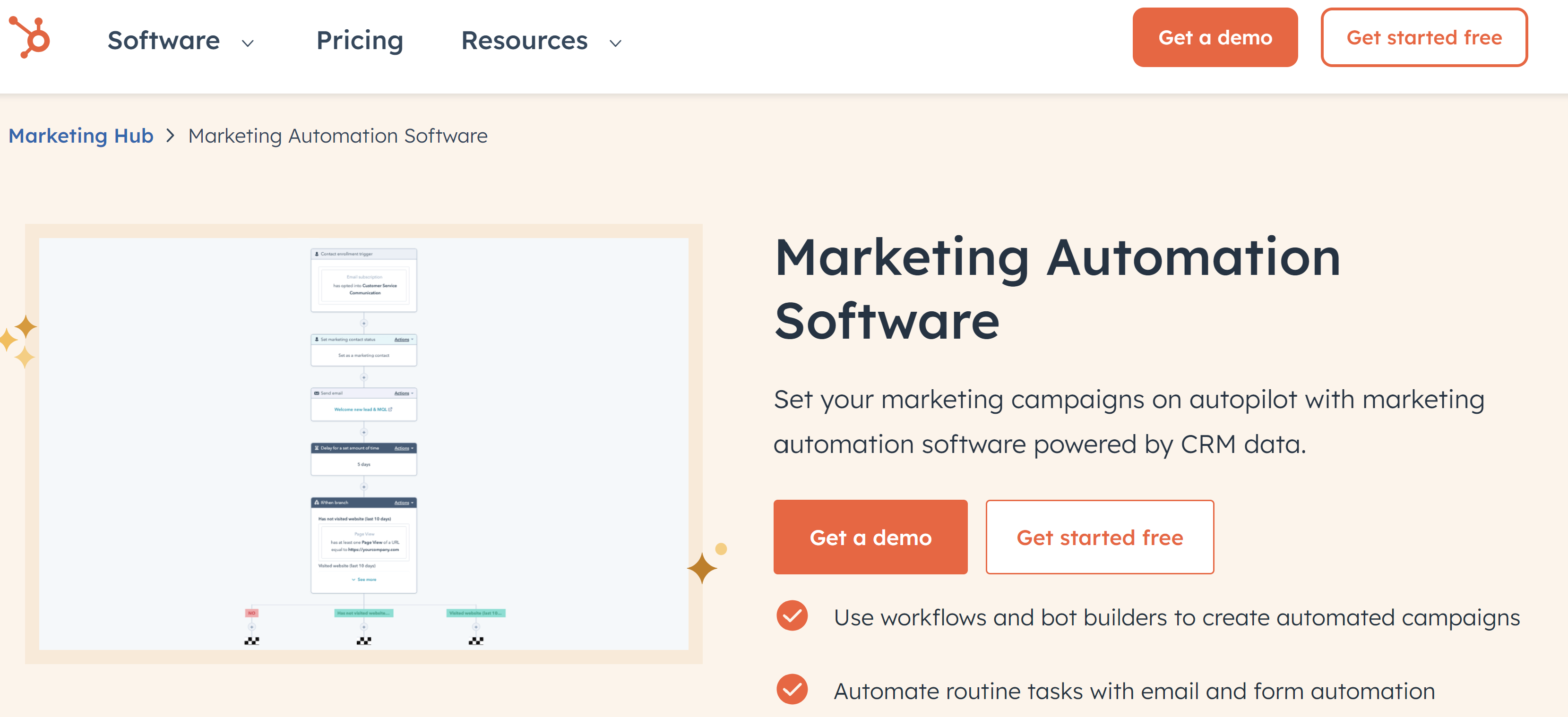
3. Create memorable experiences and evoke emotions.
Learn from the playbooks of Porsche and Lamborghini — get into experiential marketing. Give your customers something valuable, something they won’t easily forget.
You can go with different events, webinars, or whatever aligns with your business. Then, focus on emotions, as Chanel does with its short films.
Find your way to customers’ hearts — it’s about what they want, not just what they need. Luxury brands show people buy from desire, not necessity. Ensure your message resonates.
Let’s move from B2C and see how B2B can steal luxury marketing strategies.
In the Real World
I took Adobe as a perfect B2B example because it recently used two strategies we’ve just discussed.
The first one is Adobe Summit.
With a lineup of over 200 in-person sessions covering analytics, B2B marketing, and personalized omnichannel engagement, the summit provides a fantastic learning experience.
This approach closely aligns with Porsche’s and Lamborghini’s experiential strategies. Attendees are not just passive participants; they actively learn, engage, and share opinions.
The second Adobe strategy was a partnership with influencers.
To extend brand awareness for their Analytics Portfolio, Adobe targeted B2B marketers in the EMEA region across 900 accounts.
TopRank Marketing identified influencers relevant to their audience. Then, they crafted content that resulted in a remarkable 2x engagement boost compared to other Adobe campaigns.
Katrina Neal, Adobe’s Data and Analytics Strategist, shared her thoughts on this strategy:
As a team, influencers brought the desired results for Adobe — increased reach, interest, and engagement.
Use Smart Marketing to Keep People Interested
Luxury brands use smart marketing to keep people interested, but their strategies aren’t very different from other companies. It’s just about adapting strategy appropriately.
Sometimes, it’s good to stick with traditional methods, while at other times, it’s necessary to accept the future and go digital. B2B or B2C, luxury or non-luxury — not required.
You simply need to recognize what, when, and how to make your audience love it.
![Download Now: Free Marketing Plan Template [Get Your Copy]](https://no-cache.hubspot.com/cta/default/53/aacfe6c7-71e6-4f49-979f-76099062afa0.png)

